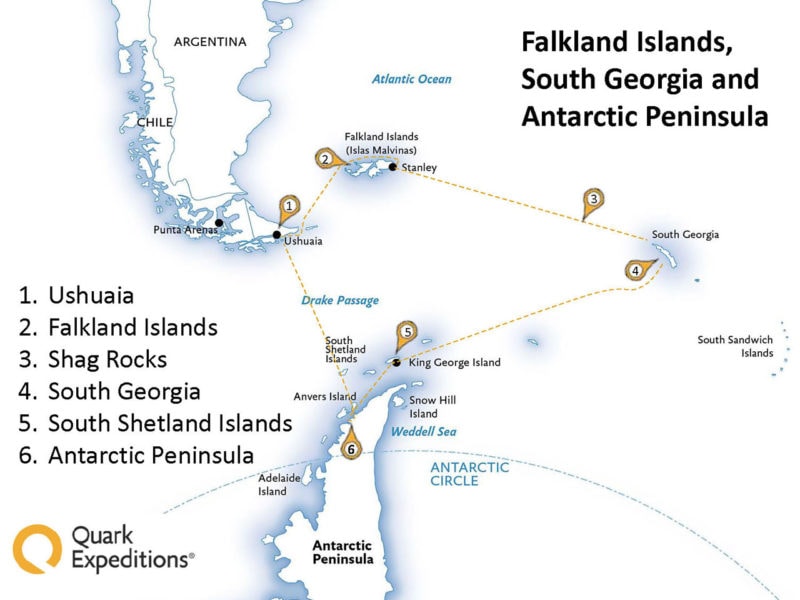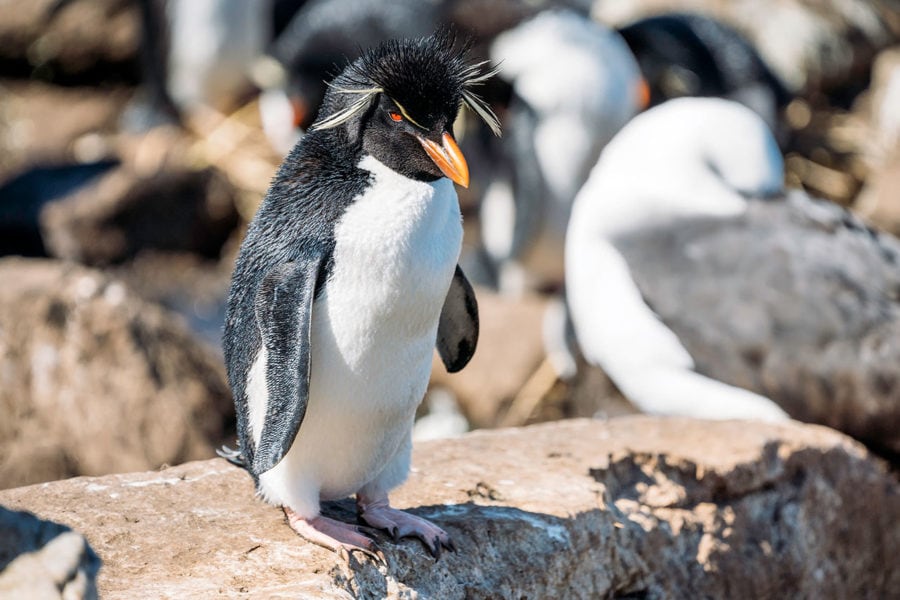The post My Favorite Boots & Shoes for Traveling appeared first on The Blonde Abroad.
from The Blonde Abroad https://ift.tt/315TVr3
The post My Favorite Boots & Shoes for Traveling appeared first on The Blonde Abroad.
The post The Ultimate Guide to Mendocino County appeared first on The Blonde Abroad.
The post 20 Things Every Traveler Should Know appeared first on The Blonde Abroad.
The post Diving the Red Sea in Aqaba with Deep Blue Dive Center appeared first on The Blonde Abroad.
The post Top Things to See and Do in Northern California appeared first on The Blonde Abroad.
The post Helpful Tips for Working from Home as a Freelancer appeared first on The Blonde Abroad.
The post The Best Destinations to Travel to in March appeared first on The Blonde Abroad.
The post How to Plan the Perfect Staycation appeared first on The Blonde Abroad.
The post My Best Travel Experiences of 2019 appeared first on The Blonde Abroad.

Visiting Antarctica has been a dream of mine ever since I started traveling, and it finally became a reality. Here are some of my favorite Antarctica pictures from our trip!
I recently returned from a 20-day Antarctic cruise to the Falkland Islands, South Georgia, and the Antarctic Peninsula with Quark Expeditions.
From beautiful white-sand beaches on the Falkland Islands, to the incredible wildlife colonies of South Georgia, and of course the icebergs and mountains of Antarctica itself — I shot well over 6000 photos during the entire journey.
Below you’ll find a collection of my best pictures of Antarctica mixed in with images from the other spectacular & remote islands we visited along the way.
While photography can never truly capture the unreal experience of seeing Antarctica in person, I hope these photos will inspire you to visit the world’s 7th continent someday!


Did you know there are 17 different species of penguins around the world? You can find 8 types of penguins in Antarctica and the surrounding islands. These are King penguins, known for the vivid orange color on their heads and chests. They are very large penguins, about 3 feet tall.
We found this group of kings strolling across a section of sand dunes on Saunder’s Island in the Falklands, the first stop on our voyage. I have hundreds of penguin photos, but this one is my favorite. They looked like they’re dressed in suits commuting to work. On the beach! Walking in formation with a purpose.

One of the most striking parts of visiting Antarctica for me was the number of glaciers. Imposing walls of ice & snow hanging precariously off the edge of the continent. Occasionally we’d hear the CRACK! from a large piece splitting off and calving into the sea.
One of my Antarctica photography goals was to capture a calving glacier on film, and after spending wayyyyy too much time trying, I luckily managed to do it (which I’ll be sharing soon)! Unfortunately Antarctica’s glaciers are melting at an unprecedented pace due to climate change.



Chinstrap Penguins are named after the black neckband that makes it look like they’re always grinning. These little penguins can be found most often near the Antarctic coastline, but will also hitch a ride out on icebergs floating into the middle of the sea.
You can always tell which penguins are taking care of the nest, and which have just returned from hunting in the ocean by how dirty they are. This group has been on nest duty for a while!

The Antarctic tourist season lasts from November to March, which is summertime in the Southern Hemisphere. Because you are so far South, the sun sets much later than normal. Around 11pm in November when we were visiting.
While you might be super tired from all the fun daytime activities during a trip to Antarctica, I highly recommend heading out on the ship’s deck to catch the amazingly colorful (and long) sunsets for some great photos!



Very similar looking to Rockhoppers, locating Macaroni penguins during our Antarctica trip was a special treat, because they can often be difficult to find. Macaronis prefer to nest on very remote and exposed rock outcroppings that are challenging for humans to reach.
Luckily our ship’s bird expert happened to discover a colony, and we used our zodiac boats to maneuver in close. They were named “Macaroni” after the 18th-century English fashion of wearing outlandish clothing & wigs!


Yes, you can go kayaking in Antarctica! Our ship offered 2 options, traditional sea kayaking in a hard-shell kayak, or an inflatable sit-on-top kayak. Both options require you to wear what’s called a “dry-suit” that’s basically a waterproof suit covering warm layers underneath.
Kayaking in Antarctica allows you to get away from the ship and the zodiac boats, so you can really experience the profound silence in this remote part of the world. Gliding quietly over the surface of the ocean past icebergs, watching seals and penguins swim beside you.








This is Brown Station, an Argentine scientific research station on Coughtrey Peninsula in Antarctica. Established in 1951, it was burned down in the 80’s by the station’s doctor to protest an order to spend the winter there. One of a handful of crimes committed in Antarctica.
These days the rebuilt station is only open during the summer, and is also used as a popular landing spot for Antarctic cruises like ours. It’s home to a colony of Gentoo penguins, and has scenic lookouts you can hike up to with great views of Antarctica’s stunning Paradise Harbour.

Whaling was a very profitable operation in the waters around Antarctica during the early 20th century. Whales were numerous down here, and “easy” to catch. The resulting whale oil was sold for use in lighting, lubrication, and leather tanning. It could also be hardened and turned into margarine and soap.
This old rusting “whale catcher” at Grytviken Station in South Georgia is a relic of that industry — look closely and you’ll see the harpoon at the bow and the “crows nest” on the mast, where sailors sat to spot whales. Thankfully whaling is now illegal here, and populations have been slowly making a comeback.

St Andrews Bay in South Georgia is home to a massive colony of King Penguins, over 250,000 breeding pairs. Penguin colonies are measured in “breeding pairs” because at any one time, half the penguins might be at sea fishing, and many baby penguins might not make it through the winter.
So in reality there are over 500,000 penguins living here. One of the first things that struck me after landing at St. Andrews was the sheer volume of sound from all these birds chatting away together! I’ve never experienced anything like it.

This is a baby King Penguin. It looks completely different than its parents, brown and fluffy with soft down feathers to keep it warm in the wind. King Penguins have one of the longest breeding cycles of any bird at 16 months.
During the harsh winter, penguin chicks will have to stand around in the cold for weeks waiting for their parents to return from the ocean with a meal. Many don’t make it, and only the strongest survive.

No, there are no polar bears in Antarctica. But there IS an animal you have to be careful of — fur seals! You’ll find these guys all over the place, and navigating through them can be a challenge. While they may look cute, they have no problem charging you (or taking a bite) if you get too close.
Fur seals have very sharp teeth, and are extremely territorial. One of our guides actually got bitten in the leg during our Antarctica trip. Luckily he had many layers on, and no skin was broken. But a fur seal bite can quickly get infected badly, so it’s important to keep your distance from these guys.

We traveled to Antarctica on the Ocean Endeavour, a 30-year old ship built in Poland and leased to Quark Expeditions. There were 199 passengers and 115 crew members. While you could certainly feel the motion of the ocean under your feet, overall it was a pretty mellow journey. Even the notorious Drake Passage was calm!
The ship had great food, plenty of deck space, a spa, gym, sauna, and even a heated pool! The cabins were cozy but comfortable. There was free WhatsApp messaging, or you could purchase a full WiFi package for $100 that worked pretty well for uploading photos (not video though).

You can’t visit Antarctica without attempting the infamous polar plunge! Because what sane person wouldn’t want to strip down and dive into the icy ocean surrounding Antarctica? While it sounds crazy, diving into 33F degree water with icebergs floating by wasn’t as bad as I thought it would be.
Yes, it shocks your body, but not so badly that you can’t think clearly. And with the amount of endorphins and adrenaline pumping through your veins, you barely feel the cold once you get out! In fact, I felt AMAZING afterward. It was super refreshing.
I hope my photos of Antarctica have helped inspire you to visit one day in the future! How does one visit Antarctica you ask? Well, it’s not cheap.
Trips to Antarctica cost between $5000 and $10,000 (or more) depending on the length of the trip, the operator, and other details.
There are ways to save money on a trip to Antarctica though, for example by booking your trip very early. We booked our voyage with Quark Expeditions a full year in advance!
Cruise ships are not environmentally friendly — at all. So traveling to Antarctica was a tough decision for me.
While Quark has a track record of offsetting their carbon emissions, and I offset my own portion (air and ship travel) with a donation to the Antarctic & Southern Ocean Coalition, we are still leaving an impact by visiting.
There are very strict regulations regarding tourism in Antarctica and the surrounding islands governed by an organization called IAATO.
We had to clean our own boots, pants, and backpacks before and after every landing to avoid contaminating the area with foreign plants, insects, or bacteria. Only 100 people are allowed to land at one time too.
While no tourism is perfectly environmentally friendly, I felt better about my trip after witnessing how seriously they take the “leave no trace” attitude. ★
Subscribe to my YouTube Channel for new Adventure Travel Videos!
(Click to watch THE GREAT ESCAPE! | Penguin VS Orcas Antarctica on YouTube)
I hope you enjoyed my Antarctica photos! Hopefully you found them useful. Here are a few more wanderlust-inducing articles that I recommend you read next:
Have any questions about visiting Antarctica? Which of my photos did you like best? Drop me a message in the comments below!
This is a post from The Expert Vagabond adventure blog.
The post Tips for Traveling Amsterdam on a Budget appeared first on The Blonde Abroad.
The post The Ultimate Guide to Santa Cruz Island in the Galápagos appeared first on The Blonde Abroad.
The post Tips for Visiting the Dead Sea in Jordan appeared first on The Blonde Abroad.
The post 20 Photos to Inspire Your Next Outdoor Adventure appeared first on The Blonde Abroad.
The post Why Travel is the Best Form of Self-Care appeared first on The Blonde Abroad.
The post 10 Tips for Your First Trip to Japan appeared first on The Blonde Abroad.
The post The Best Babymoon Destinations Around the World appeared first on The Blonde Abroad.
The post Highlights from TBA Escapes Galápagos Luxury Yacht Eco Expedition appeared first on The Blonde Abroad.